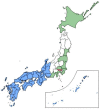Causal Effect of the Tokyo 2020 Olympic and Paralympic Games on the Number of COVID-19 Cases under COVID-19 Pandemic: An Ecological Study Using the Synthetic Control Method
- PMID: 35207697
- PMCID: PMC8879008
- DOI: 10.3390/jpm12020209
Causal Effect of the Tokyo 2020 Olympic and Paralympic Games on the Number of COVID-19 Cases under COVID-19 Pandemic: An Ecological Study Using the Synthetic Control Method
Abstract
Previous studies have not assessed the causal effect of the Olympic Games on the spread of pandemics. Using the synthetic control method and the national public city data in Japan recorded from February to September 2021, we estimated the causal effects of the Tokyo 2020 Olympic and Paralympic Games on the number of coronavirus disease 2019 (COVID-19) cases. The difference between the number of COVID-19 cases in Tokyo and a counterfactual "synthetic Tokyo" (created using synthetic control method) after the opening of the Tokyo 2020 Games (23 July 2021) widened gradually and then considerably over time. It was predicted that the Tokyo 2020 Games increased the number of COVID-19 cases in Tokyo by approximately 469.4 per 100,000 population from the opening of the event to 30 September. However, sensitivity analysis of the ratio of the pre- and post-game root mean square prediction errors using regression weights did not suggest robustness. Our results showed that the Tokyo 2020 Games probably increased the number of COVID-19 cases even under preventive regulations; however, the extent of this increase was difficult to estimate clearly due to an overlap with the fifth wave associated with the Delta variant.
Keywords: COVID-19; Olympic and Paralympic Games; Tokyo 2020; causal effect; ecological study; pandemic; synthetic control method.
Conflict of interest statement
The authors declare no conflict of interest.
Figures










Similar articles
-
Effect of the Tokyo 2020 Summer Olympic Games on COVID-19 incidence in Japan: a synthetic control approach.BMJ Open. 2022 Sep 20;12(9):e061444. doi: 10.1136/bmjopen-2022-061444. BMJ Open. 2022. PMID: 36127076 Free PMC article.
-
The Tokyo 2020 and Beijing 2022 Olympic Games held during the COVID-19 pandemic: planning, outcomes, and lessons learnt.Lancet. 2024 Feb 3;403(10425):493-502. doi: 10.1016/S0140-6736(23)02635-1. Epub 2024 Jan 17. Lancet. 2024. PMID: 38244561 Review.
-
COVID-19 risk assessment at the opening ceremony of the Tokyo 2020 Olympic Games.Microb Risk Anal. 2021 Dec;19:100162. doi: 10.1016/j.mran.2021.100162. Epub 2021 Mar 21. Microb Risk Anal. 2021. PMID: 33778137 Free PMC article.
-
Not all fun and games: Potential incidence of SARS-CoV-2 infections during the Tokyo 2020 Olympic Games.Math Biosci Eng. 2021 Nov 4;18(6):9685-9696. doi: 10.3934/mbe.2021474. Math Biosci Eng. 2021. PMID: 34814363
-
COVID-19 infection risk assessment and management at the Tokyo 2020 Olympic and Paralympic Games: A scoping review.J Infect Public Health. 2024 Apr;17 Suppl 1:18-26. doi: 10.1016/j.jiph.2023.03.025. Epub 2023 Mar 28. J Infect Public Health. 2024. PMID: 37032255 Free PMC article.
Cited by
-
Mass gathering events and COVID-19; lessons learnt from the 2020 European football championship.Bull World Health Organ. 2024 Nov 1;102(11):803-812. doi: 10.2471/BLT.23.290044. Epub 2024 Aug 26. Bull World Health Organ. 2024. PMID: 39464845 Free PMC article.
-
Effect of the Tokyo 2020 Summer Olympic Games on COVID-19 incidence in Japan: a synthetic control approach.BMJ Open. 2022 Sep 20;12(9):e061444. doi: 10.1136/bmjopen-2022-061444. BMJ Open. 2022. PMID: 36127076 Free PMC article.
-
Medical Care Management Based on Disaster Medicine for the Triathlon Events at the XXXII Olympiad and Tokyo 2020 Paralympic Games.Int J Environ Res Public Health. 2023 Oct 7;20(19):6891. doi: 10.3390/ijerph20196891. Int J Environ Res Public Health. 2023. PMID: 37835161 Free PMC article. Review.
References
-
- Abadie A., Diamond A., Hainmueller J. Synthetic control methods for comparative case studies: Estimating the effect of California’s tobacco control program. J. Am. Stat. Assoc. 2010;105:493–505. doi: 10.1198/jasa.2009.ap08746. - DOI
-
- Abadie A., Gardeazabal J. The economic costs of conflict: A case study of the Basque Country. Am. Econ. Rev. 2003;93:113–132. doi: 10.1257/000282803321455188. - DOI
LinkOut - more resources
Full Text Sources

